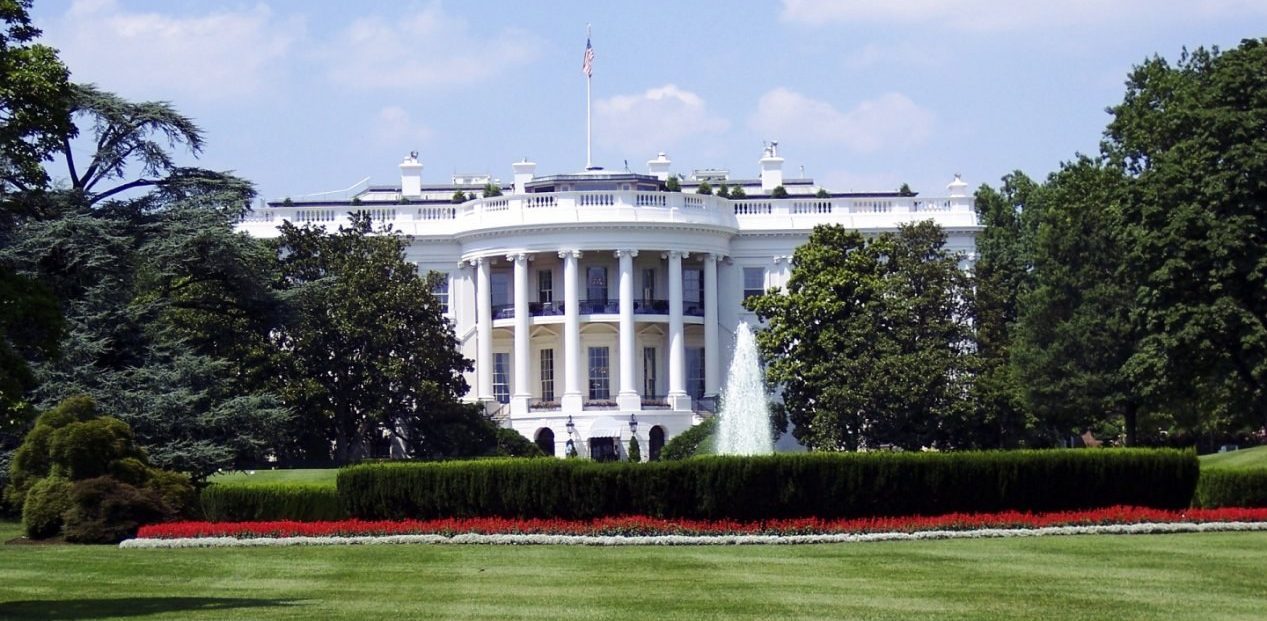A G&A Series: Paid Family Leave
This 3-part series from G&A will cover:
- Part 1: Navigating America’s Complicated Maze of Paid (and Unpaid) Leave Laws
- Part 2: Parental Leave: The Paternity Leave Movement is Trending
- Part 3: Balancing Act: How Your Company Can Support Working Parents and Caregivers
Part 1 —
Today, most American workers don’t get paid for long-term family leave, and less than half get sick day pay. This is one reason paid leave is a top ask for candidates interviewing for open positions and for employees trying to determine if they want to stay with their current employers. Businesses, in turn, are working to meet employees’ needs, but many find it challenging to afford this (mainly) optional employee benefit.
American employees want to be compensated for the time they take away from work to recover from illness or injury, bond with a new child, or care for a family member. However, there is no federal paid leave mandate, and only a scattering of state and local jurisdictions have passed laws that require companies to pay employees who are out sick or caring for others. In jurisdictions with no requirements, it is up to the employer to provide paid or partially paid leave benefits.
The COVID-19 pandemic reinvigorated American workers’ lobbying efforts for employer benefits that promote a healthy work-life balance, including paid family leave and sick pay, and the movement is gaining traction. Business owners are navigating these demands in a competitive labor market, as well as various state and local paid family medical leave and sick leave laws—and their intersection with the FMLA.

Navigating America’s Complicated Maze of Paid (and Unpaid) Leave Laws
Wading through the maze and moving parts of federal, state, and local paid family medical leave and sick leave laws can be a confusing process for business owners.
"Employers should be familiar with the requirements of each jurisdiction in which they operate and make sure they comply with paid leave regulations, so they don't unintentionally do something that comes back to bite them," says Dave Berndt, J.D., HR Project and Training Manager for G&A Partners. "It can be challenging."
Following is a synopsis of current federal, state, and local leave requirements in the U.S. and pending federal legislation that could mandate (in the not-too-distant future) paid (short-term) sick leave and paid (longer-term) family and medical leave.
Paid Sick Leave: Federal, State, and Local Requirements
Sick pay is usually reserved for short, health-related absences or staying home to take care of a sick child. Paid sick leave often accrues over time (such as one hour of leave earned for every 40 hours worked; up to seven days per year) and replaces 100% of the worker's regular wages while out of the office.
While there is no comprehensive federal paid sick leave law, some federal contractors have mandatory sick leave pay. And, to fill the gap created by the absence of federal law, some states and local jurisdictions have enacted their own paid sick leave regulations.
Note: Paid sick leave can be covered in a company’s PTO policy, but it must be crafted to comply with state paid leave requirements. Some employers prefer separate vacation and sick policies to navigate this, while others prefer them to be all in one—so they don’t have to manage multiple time-off plans.

Federal Law: Sick Leave for Some Contractors
According to the U.S. Department of Labor's Wage and Hour Division, Executive Order 13706, signed by President Barack Obama in 2015, established paid sick leave for federal contractors for short-term health needs and preventive care.
However, the law applies only to companies that employ contractors and subcontractors under:
- The Service Contract Act
- The Davis-Bacon Act
- Concessions contracts
- Service contracts in connection with federal property or lands
Requirements of Executive Order 13706 include:
- Eligible employees earn one hour of leave for every 30 hours worked in connection with a covered federal contract. Workers can accrue up to 56 hours (the equivalent of seven 8-hour days) of leave per year, or at a time, and can carry over unused paid sick leave from the previous year.
- When employees use their paid sick leave, contractors must provide workers with their regular pay and benefits.
- Employers can provide a year's worth of leave in advance, rather than requiring workers to accrue it one hour at a time.
- Workers can utilize the paid sick leave for themselves or to care for a child, parent, spouse, domestic partner, or any other individual with whom they have a close relationship, regardless of biological or legal ties.
- Employers must also provide "safe time" for an employee to address the impact of domestic violence, sexual assault, or stalking of the employee or an employee's family member.

State and Local Laws: Employer Paid Sick Leave
Because Executive Order 13706 only mandates sick leave pay for specified federal contractors, some state and local governments have enacted employer-paid sick leave laws. The laws vary, but typically paid sick leave is for absences due to short-term illness or injury and preventive healthcare for the employee and the employee's children or other family members. Most have exemptions based on the size and type of employer or allow employers to impose specific worker eligibility requirements. Some also permit employers to set a waiting period before new employees use accrued leave.
States with Employer Paid Sick Leave laws
include:
- Arizona
- California
- Colorado
- Connecticut
- Maryland
- Massachusetts
- Maine
- Michigan
- Nevada
- New Jersey
- New Mexico (effective 7/1/22)
- Oregon
- Puerto Rico
- Rhode Island
- Vermont
- Washington
- Washington, D.C.
Local jurisdictions with Employer Paid Sick Leave laws include:
- California: Cities of Berkeley, Emeryville, Long Beach, Los Angeles, Oakland, San Diego, San Francisco, and Santa Monica
- Illinois: Chicago and Cook County
- Minnesota: Cities of Duluth, St. Paul, Minneapolis
- New York: New York City
- Pennsylvania: Philadelphia
- Washington: Cities of Seattle, Spokane, Tacoma
"Employers should be familiar with the requirements of each jurisdiction in which they operate and make sure they comply with paid leave regulations, so they don't unintentionally do something that comes back to bite them."
— Dave Berndt, J.D., HR Project and Training Manager for G&A Partners
Federal Paid Sick Leave Legislation
For close to two decades, a bill proposing national paid sick leave standards—called the Healthy Families Act—has been considered by U.S. Congress in various iterations. The most recent version was reintroduced in 2021 and has been with the Committee on Health, Education, Labor, and Pensions since.
"Working people need time to meet their own health care needs and to care for family members," states the legislation (S. 1195). "The absence of paid sick time has forced working people to make untenable choices between needed income and jobs on the one hand and caring for their own and their family's health on the other. It is in the national interest to ensure that all working people can care for their own health and the health of their families while prospering at work."
According to the National Partnership for Women and Families, the Healthy Families Act would:
- Allow workers in businesses with 15 or more employees to earn up to seven job-protected paid sick days each year to be used to recover from their illnesses, access preventive care, provide care to a sick family member, or attend school meetings related to a child's health condition or disability. In addition, employees who are survivors of domestic violence, stalking, or sexual assault can use their paid sick days to recover or seek assistance related to an incident.
- Allow workers in businesses with fewer than 15 employees to earn up to seven job-protected unpaid sick days each year to be used for the same reasons—unless their employers choose to offer paid sick days.
- Establish a simple method for calculating accrued sick time. Unless the employer selects a higher limit, workers will earn a minimum of one hour of paid sick time for every 30 hours worked, up to 56 hours (seven days) per year.
- Enable employers to require certification if an employee uses more than three paid sick days in a row.
- Allow employers to use existing sick leave policies if they meet the minimums outlined in the Healthy Families Act for time, types of use, and method of use, and give employers flexibility as to how they define a "year" for sick time accrual.

Paid Family and Medical Leave: Federal, State, and Local Requirements
Paid family and medical leave (PFML) allows workers to:
- Take longer periods of leave to recover from a more serious personal injury or illness
- Care for a loved one
- Take leave for the birth or adoption of a child
On average, PFML provides six to 12 weeks of fully or partially paid leave per year without the need for accrual. Paid family and medical leave may be insured and funded by employer and/or employee contributions.
The U.S. is the only developed country with no national paid leave policy. Because of this, a growing number of states (plus the District of Columbia) have implemented—or are considering implementing—paid family leave laws. In addition, the U.S. Congress is discussing national paid medical leave laws that could serve as umbrella policies for the entire country.
Federal: Unpaid Family Leave for Some Employees
Signed into law in 1993, the Family Medical Leave Act (FMLA) allows employees of covered employers up to 12 weeks of unpaid, job-protected leave for specified family and medical reasons; and up to 26 weeks to care for a covered servicemember with a serious injury or illness. The Act applies to organizations with 50 or more employees within a 75-mile radius and workers employed for at least 1,250 hours during the prior 12 months.
According to the Department of Labor's Wage and Hour Division, workers can take FMLA leave for the following reasons:
- The employee is unable to work because of a serious health condition
- The birth of a child and to bond with the newborn child
- The placement of a child for adoption or foster care and to bond with that child
- To care for a spouse, child, or parent who has a serious health condition
- To care for an adult child with a serious health condition—if they are incapable of self-care due to disability
- To care for a covered servicemember with a serious illness or injury if the worker is the spouse, parent, child, or next of kin of the servicemember—or while the employee's spouse, son, daughter, or parent is on covered active duty or call to covered active-duty status
Though FMLA leave is unpaid, workers may choose to, or employers may require them to, substitute accrued paid sick, vacation or personal time for FMLA leave. Employers are also required to continue paying the employer's share of workers' group health insurance premiums on the same terms as if they were not on leave.
And though employers are not mandated to offer a paid leave plan, the U.S. Fair Labor Standards Act (FLSA) states that employers may not dock the pay of exempt employees for absences due to sickness or disability unless:
- Employers have a bona fide plan for paid time off that can be used for these absences, and
- Exempt employees are either not yet eligible or have exhausted their benefits under the plan.
State and Local: Paid Family and Medical Leave Laws
Several states have expanded job-protected leave benefits beyond FMLA's minimum standards by expanding eligibility, the duration of leave, the definition of family members, or qualified reasons for taking leave in the private or public sector.
In addition, ten states—and the District of Columbia—have passed laws that mandate paid family and medical leave programs, according to the Bipartisan Policy Center's "State Paid Family Leave Laws Across the U.S." Several other states have introduced paid leave legislation in recent years.
States with PFML laws include:
- California
- Colorado
- Connecticut
- Maryland
- Massachusetts
- New Jersey
- New York
- Oregon
- Rhode Island
- Washington
- Washington, D.C.
G&A Partners' Dave Berndt says many employers offer voluntary paid family leave in states that do not require it. "Candidates want to work for companies that provide paid family leave," he says. "By offering this benefit—even if you aren't required to—you can attract top talent, boost retention rates, and improve employee engagement and morale. It's a win-win."
Federal Paid Family and Medical Leave Legislation
There have been several attempts to pass a national paid family leave policy, but none have succeeded. The Families First Coronavirus Response Act (FFCRA) temporarily required U.S. employers with fewer than 500 workers and all public employers to provide up to two weeks of partially paid leave to workers who needed time off work to care for someone in quarantine—or if their child's school or daycare had closed due to the pandemic. However, the FFCRA expired at the end of 2020.
Two bills are pending in Congress that could enact national paid family leave programs, according to the Kaiser Family Foundation (KFF) 's "Paid Leave in the U.S."
These include:
- The Family and Medical Insurance Leave (FAMILY) Act would create a national insurance program to provide workers up to 12 weeks of their partial income for their serious health condition or that of an immediate family member or the birth or placement of a child. Employee and employer payroll contributions would fund the program.
- The Build Back Better Act proposes a national paid family and medical leave program that would augment the FMLA's current unpaid protections by providing up to four weeks of paid leave for the birth of a child or the placement of a child with the employee for adoption or foster care. It also makes parental leave available to all employed and self-employed workers. The U.S. House of Representatives passed this version of the bill on Nov. 19, 2021, but it is currently in limbo.
Research indicates that access to paid family and medical leave is associated with improved physical and mental health for new parents, decreased infant mortality, financial security for caregivers in the short- and long-term, and improved connections to the workforce, particularly for women, who are more likely than men to be caregivers for children and older adults," states the KFF article.
"Candidates want to work for companies that provide paid family leave. By offering this benefit—even if you aren't required to—you can attract top talent, boost retention rates, and improve employee engagement and morale. It's a win-win."
— Dave Berndt, J.D., HR Project and Training Manager for G&A Partners
Paid Leave Best Practices
Employees whose paychecks continue when they are sick, on parental leave, or caring for a loved one feel more financially secure and are less likely to search for other employment. They are also less likely to go to work while sick and expose other employees to illness.
Paid leave also improves worker retention, which saves employers money through reduced turnover costs, according to the National Partnership for Women and Families' "Paid Leave Policies Benefit Businesses’ Bottom Lines."
G&A’s Dave Berndt recommends the following operational and compliance best practices:
- Identify every state and city where your company employs workers and align applicable federal, state, and local leave laws with business operations in those locations.
- Regularly review company policies to make sure they are at least as generous as what the law requires.
- If you do not operate in a jurisdiction with a paid leave law, consider implementing one of your own.
- Consistently communicate with employees about how much paid sick and leave time they are allowed and how your company is tracking it.
- Provide holistic employee benefits that help reduce the need for leave or reduce leave durations, including onsite childcare services, subsidies for childcare and elder-care services, remote or hybrid work arrangements, and flexible scheduling.
- Anticipate that states, cities, and counties will continue to pass new legislation—if the federal government does not. This means it’s important to stay up to date on new/pending laws and it’s especially important that you keep an eye on the states where you currently have (or will soon have) remote employees.
- Work with your HR team or a professional employer organization (PEO) to develop and coordinate appropriate leave policies and implement comprehensive solutions that help you track leave and pay benefits and maintain compliance with intersecting leave laws.
Next: PART 2 - Parental Leave: The Paternity Leave Movement is Trending
How G&A Can Help
G&A’s experienced human resources professionals understand the nuances of federal and state labor laws and can keep you informed of any relevant paid leave laws—including those related to remote workers moving to a new state or newly hired remote workers living in a different state.


